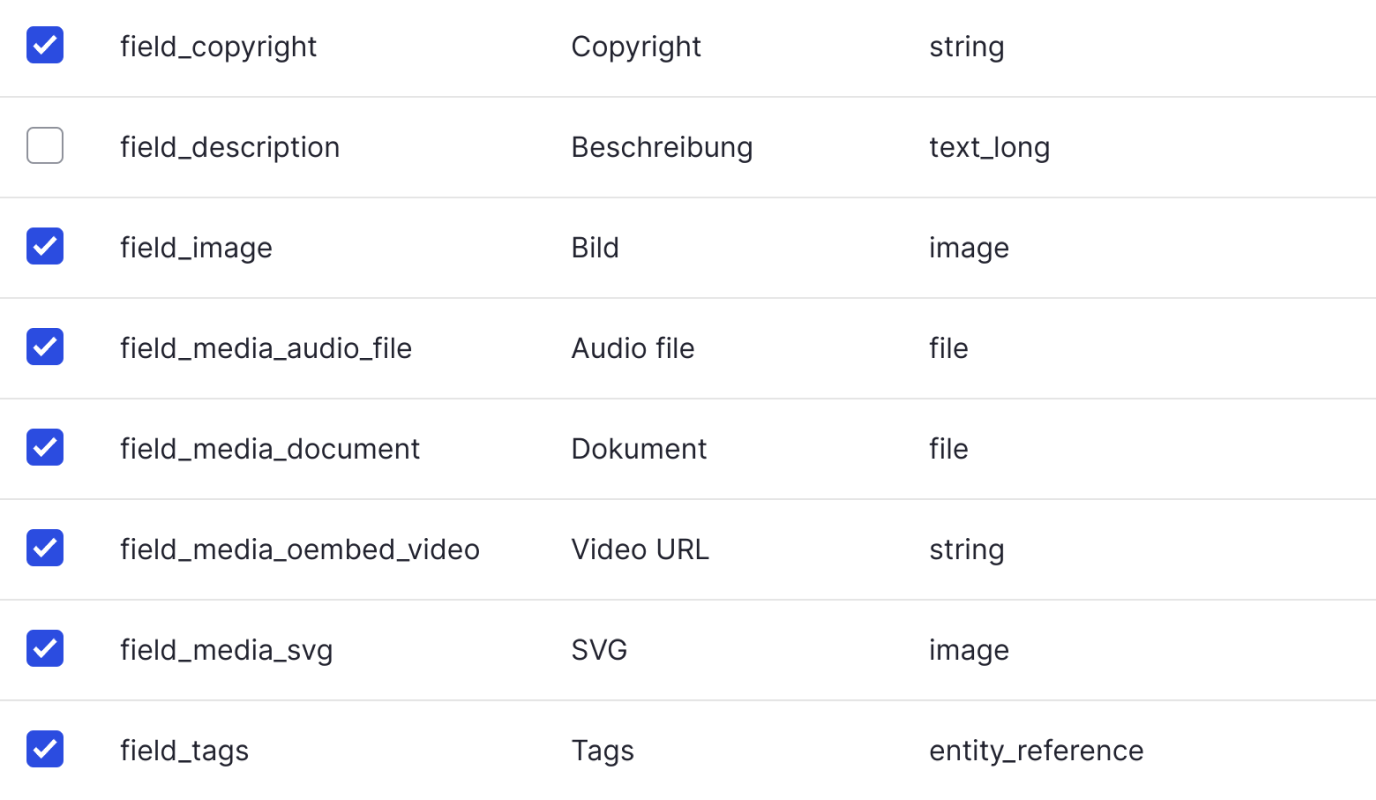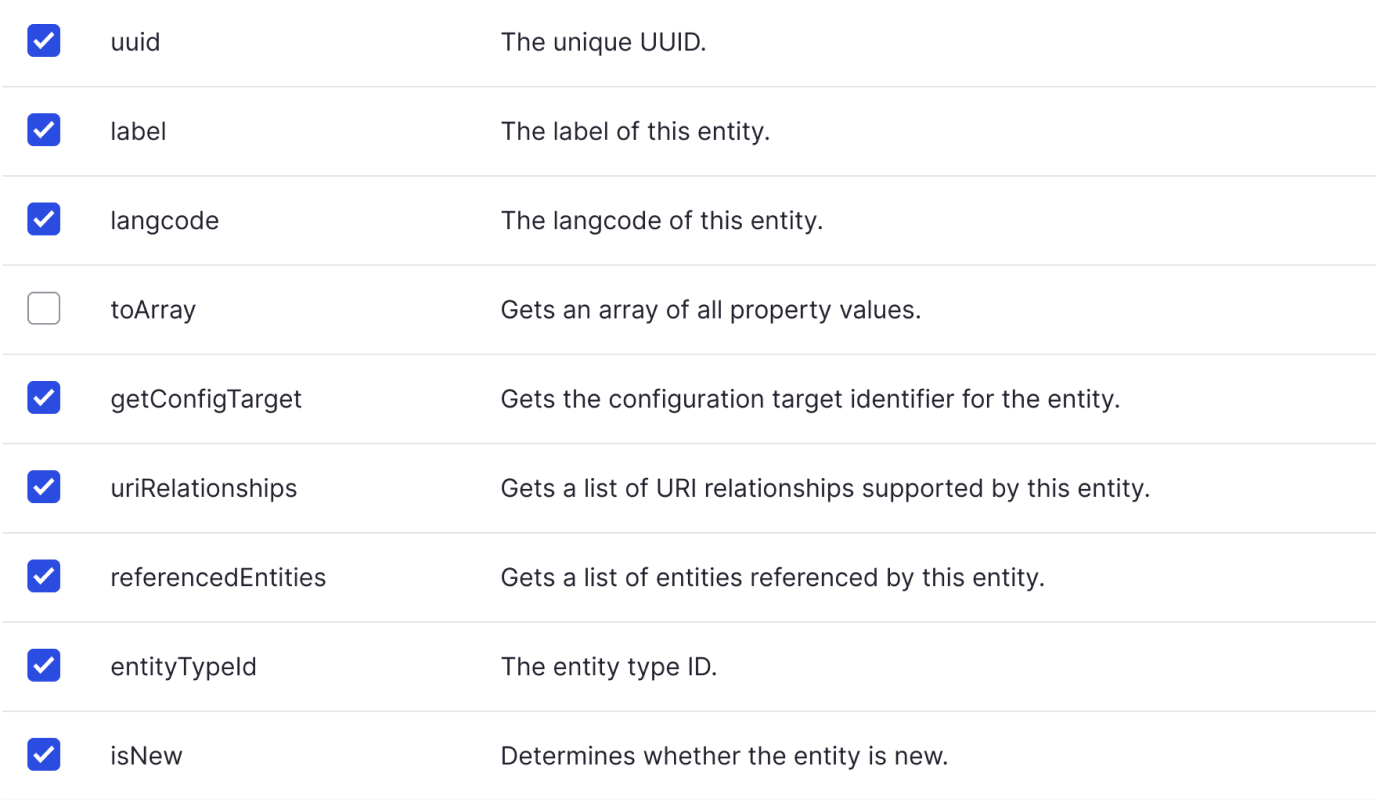Configuration
After installing the module, navigate to the GraphQL configuration page at /admin/config/graphql.
Enabling Entity Types
Specify which entity types should be included in the schema. It is important to select at least one entity type for the module to function correctly.

WARNING
Note that even when an entity type is not enabled, it's still possible to access some of its fields via the Entity interface, for example the id field. Access checks are still performed, and it is encouraged not to rely solely on GraphQL to protect sensitive information. Instead, use Drupal's entity and field access mechanisms.
Once you have selected an entity type, save the configuration and rebuild the cache. The schema will now include a type for the entity:
type User implements Entity & EntityLinkable {
id: String
url(rel: String): Url
}Entity Types with Bundles
If the selected entity type supports bundles, the module generates both an interface and types for each bundle:
interface Node implements Entity & EntityLinkable {
id: String
url(rel: String): Url
}
type NodeNews implements Entity & EntityLinkable & EntityTranslatable & Node {
id: String
translation(fallback: Boolean, langcode: Langcode!): NodeNews
translations: [NodeNews]
url(rel: String): Url
}Enabling Fields
After enabling an entity type, navigate to the Enabled fields section on the configuration form.

There, you can select which fields you would like to include in the schema. Most field types will work out of the box. However, some field types, such as metatag, contain serialized values that may not be useful to consumers. Support for these fields must be implemented through schema extensions.
The module generates GraphQL types for all enabled field types, even if they do not extend a more basic field type. This allows schema extensions to provide additional functionality by extending the existing types.
Base Entity Fields
The schema generates a base Entity interface that all enabled entity types implement. You can define which fields should be added to this interface.

The id field is always added and cannot be disabled. This is because each type must have at least one field, as required by GraphQL.
If, for some reason, you do not want to expose the ID field, you can easily add your own resolver for this field:
$registry->addFieldResolver('Entity', 'id', $builder->fromValue(NULL));